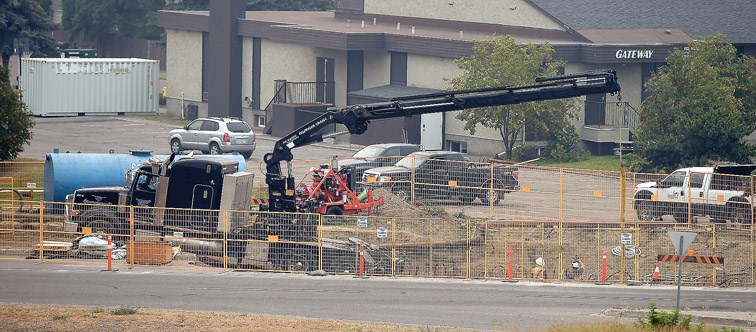The City of Prince George needs to double what it is currently spending on its stormwater drainage system in order to make the system sustainable, according to a report that went to city council on Monday.
Between 2016 and 2020 the city spent an average of $4.6 million per year, city asset manager Kristie Bobbie said. A technical working paper conducted as part of the city’s new integrated stormwater management plan being estimated the city should be spending roughly $9.1 million per year to replace aging infrastructure and maintain the system.
The $9.1 million estimate works out to $9 per metre of stormwater system, slightly less than the median value spent by cities that participate in the National Water and Wastewater Benchmarking Initiative, according to the report. The group is made up of more than 30 Canadian cities, including Prince George.
Part of the city’s challenge is Prince George is very large geographically for its population size, Bobbie said.
“Prince George has an extensive stormwater system,” Bobbi said. “The City of Prince George has the highest length of stormwater system per capita of any Canadian municipality that participates (in the NWWBI).”
Failing storm sewers can cause damage to private property and other infrastructure, like the massive sinkhole that closed Massey Drive near Winnipeg Street during the summer of 2018, Bobbie said.
Currently the city’s stormwater system is funded through the general tax levy, and covering the additional $4.5 million per year through property taxes would result in a roughly four per cent increase, city director of finance Kris Dalio said.
Coun. Susan Scott welcomed the report, even though it will mean added costs to the city.
“I think it is long overdue that we got real about the cost of doing business,” Scott said.
Part of the working paper looked at options for funding the system. Options included continuing to fund it through general taxes, creating a dedicated stormwater tax levy (similar to the city’s snow removal levy), adding a stormwater surcharge to the city’s water utility bills or establishing a stormwater utility rate (similar to the city’s garbage collection and water/sanitary sewer utilities).
The city considered establishing a stormwater utility rate in 2013, but the idea was shelved because of public opposition.
A follow-up report is expected to go before city council on Aug. 30, followed by a public consultation period in mid-September.
“The price tag is one that makes you gasp,” Coun. Garth Frizzell said. “(But) whether you put it one way or the other, we have to have a place to put stormwater when it rains.”
Coun. Cori Ramsay said she would like the city to revisit a funding model similar to the one considered in 2013, in which the stormwater utility rate was based on the amount of area on each property that is impervious to rainwater, such as buildings, paved parking lots, etc.
“I really feel this needs to not come back to the general tax levy,” Ramsay added.
People’s understanding of issues like climate change’s impact on weather and flooding has evolved since 2013, she said.
Coun. Brian Skakun said the city got a lot of pushback from the public in 2013 and no matter how you fund the increase, it amounts to another tax.
“I think this is going to take a lot of work, going forward.”



